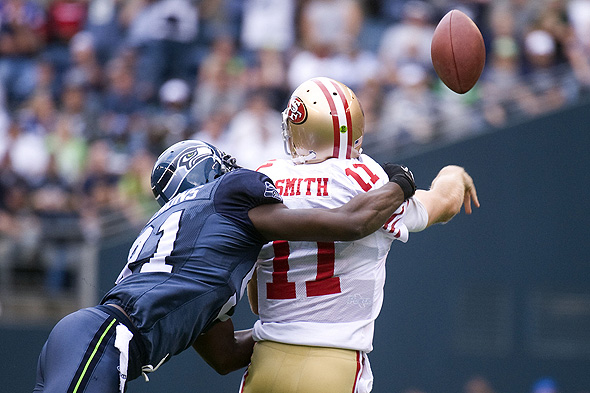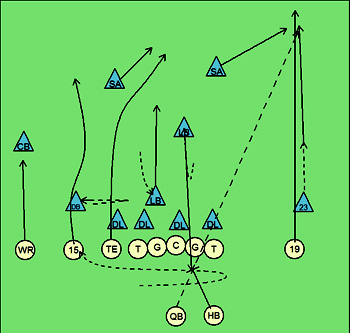
When he was selected with the first overall pick in the 2005 NFL draft, Utah quarterback Alex Smith had one major problem when graduating to the pros after years in Urban Meyers power spread offense: He hadnt really taken snaps under center, and his mechanics were actually quite raw in that department. Of particular concern to analysts who had studied his college tape was his footwork when dropping back. It sounds like the simplest thing, but the quarterback position is a matter of timing in every way possible, and that footwork is as crucial as anything else.
Smith has struggled through injuries and a host of offensive coordinators through his time in San Francisco, and hes still trying to find his way the upcoming game against the Seahawks will be his first start in five games, as 49ers head coach Mike Singletary decided to see what backup Troy Smith could bring to the field as Smith recovered from a shoulder injury. Throughout his NFL education, Smith has always been better in the shotgun formation, but hes worked with coaches who dont always see eye-to-eye with that concept. Singletary in particular tends to espouse the more basic two-back or two-tight end sets that facilitate the power running that gets him going.
Last season, Smith had one of the largest differentials in DVOA (Defense-adjusted Value Over Average), Football Outsiders per-play efficiency metric) between shotgun and non-shotgun sets minus-31.2% under center, and minus-5.6% in shotgun. To put that in perspective, the under-center Smith was one of the NFLs worst quarterbacks, and the shotgun version was just a bit below league average. Comforted as he is at this point by the soft bias of low expectations, Smith had a season that was deemed fairly decent.
You know, I think what youre in the gun, you have better vision as a quarterback,” Smith said this week. “Youre backed away from the line of scrimmage and you have better vision of the whole field, including the secondary. Its easier to get the ball out (from shotgun) when theres pressure, I think. Those are the types of things that come to my mind.
 However, even in his preferred formation, Smith will occasionally throw up a real goatball, even when he has the time and circumstances that would allow a pro throw. One such example came in what actually was his best game of the 2010 season so far, a 27-24 Week 5 loss to the Philadelphia Eagles. Smith completed 25 of 39 passes for 309 yards and three touchdowns, but it was the first of his two interceptions that interested me, because the mechanics behind the throw were so questionable and they really didnt need to be.
However, even in his preferred formation, Smith will occasionally throw up a real goatball, even when he has the time and circumstances that would allow a pro throw. One such example came in what actually was his best game of the 2010 season so far, a 27-24 Week 5 loss to the Philadelphia Eagles. Smith completed 25 of 39 passes for 309 yards and three touchdowns, but it was the first of his two interceptions that interested me, because the mechanics behind the throw were so questionable and they really didnt need to be.
With 7:54 left in the first half, the 49ers ran a three-wide shotgun set from the Philadelphia 49-yard line with receiver Michael Crabtree (15) in motion against Phillys base nickel defense. Ted Ginn, Jr (19) ran a straight go route down the right hashmark, while Crabtree occupied nickel back Joselio Hanson. Smith targeted Ginn about 40 yards downfield, but was throwing off his back foot, falling away, and the underthrown ball was picked off by cornerback Dmitri Patterson (23).
Smith is not the kind of quarterback with the sheer throwing strength to get away with those kinds of faulty mechanics. Hes not a noodle-armed guy, but hes not the Jay Cutler type, either. Cutler and very few others can make those hide-your-eyes throws and still consistently complete passes. Smith must have his mechanics in line to play at a high level, and its somewhat distressing form an overall perspective that he doesnt seem to be there yet.
The Seahawks have allowed more passes 20 yards or longer than any defense in the league (48 total), but if Alex Smith tests those numbers with his own deep throws, Seahawks defenders Earl Thomas, Marcus Trufant, and Kelly Jennings may be his most targeted receivers.
